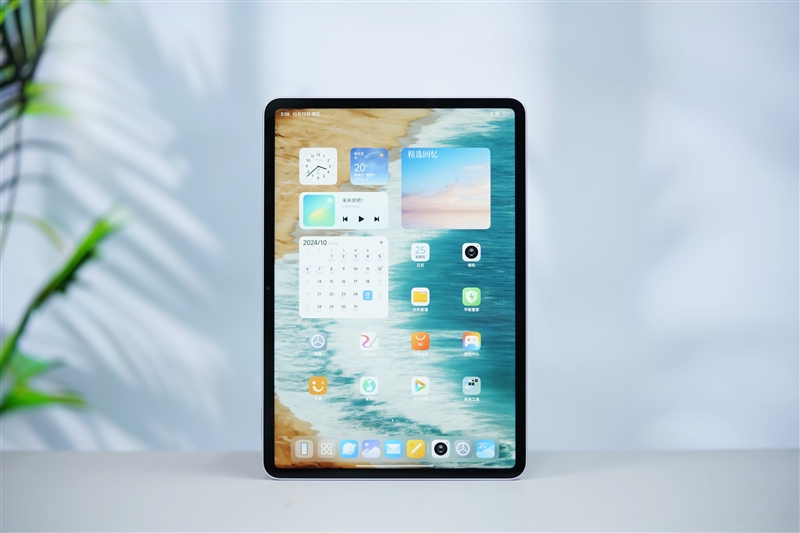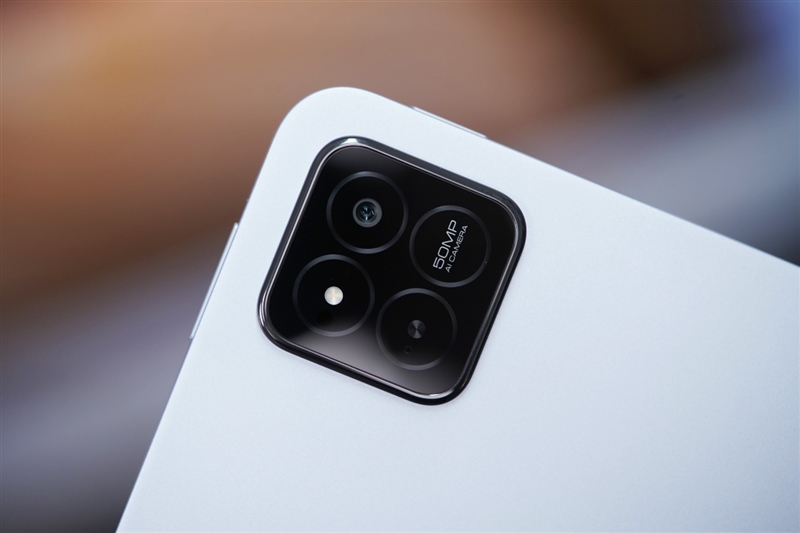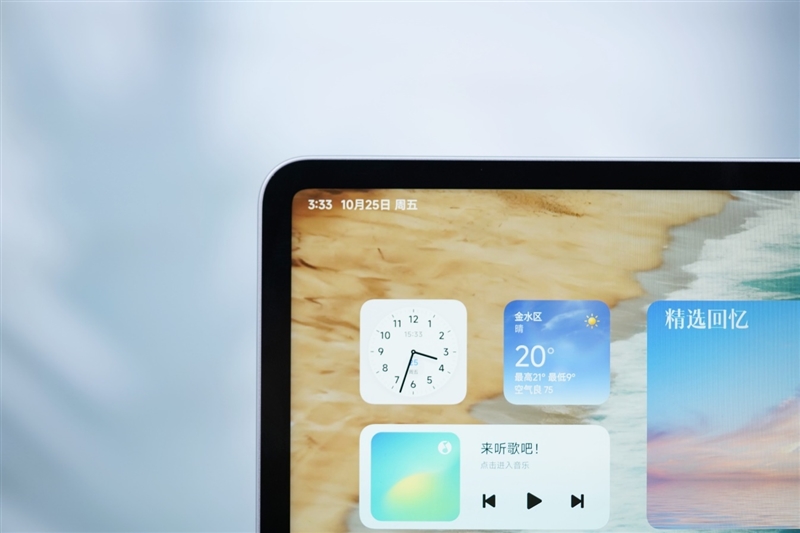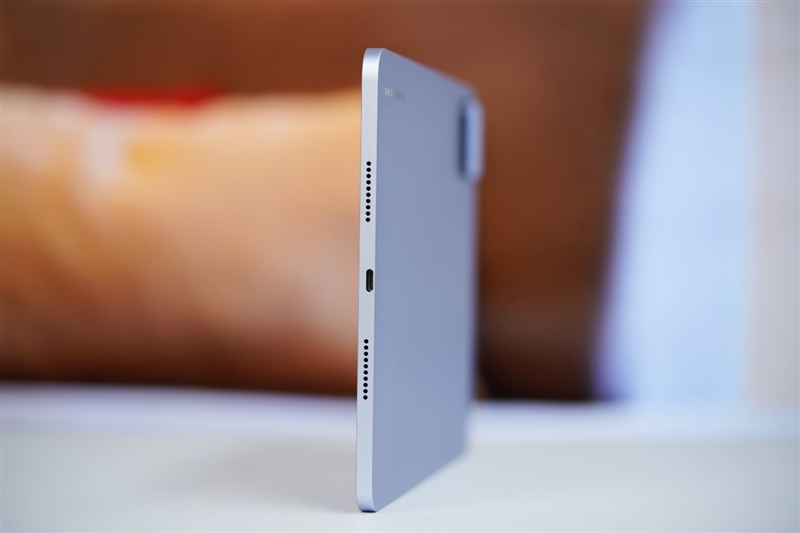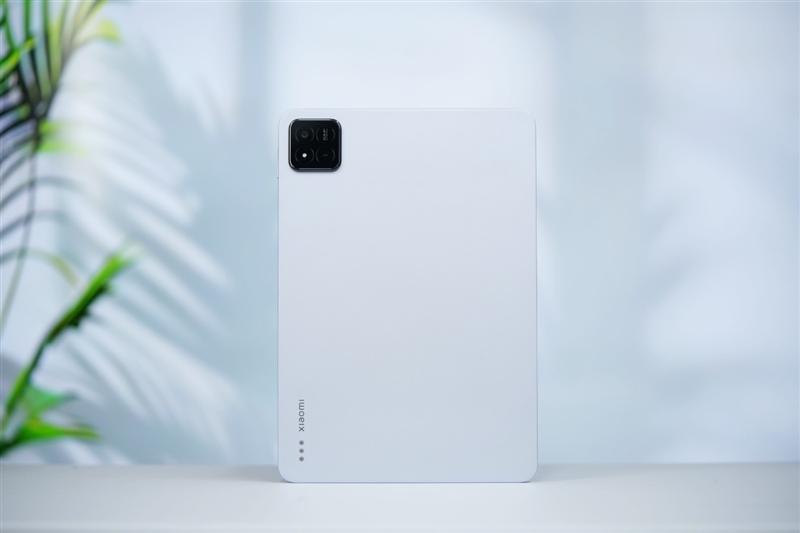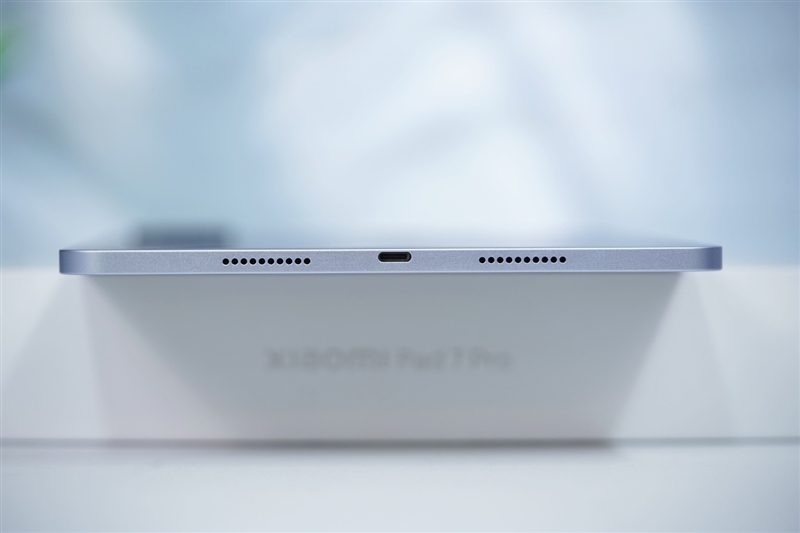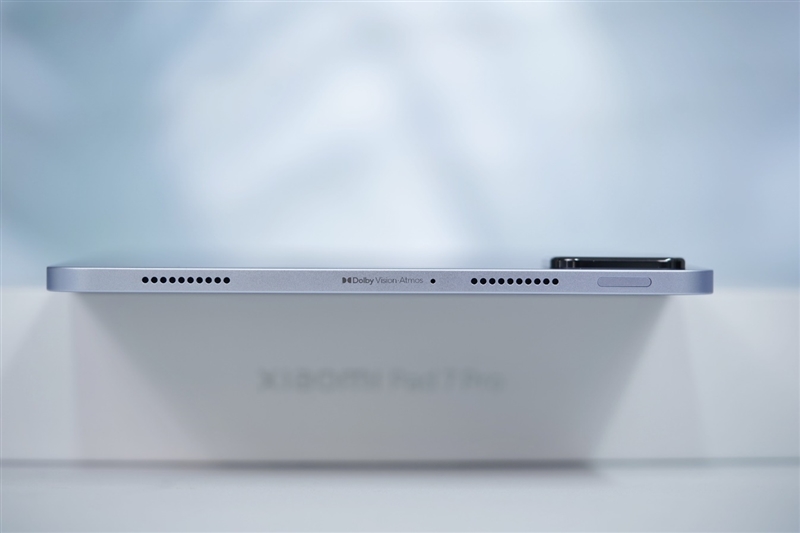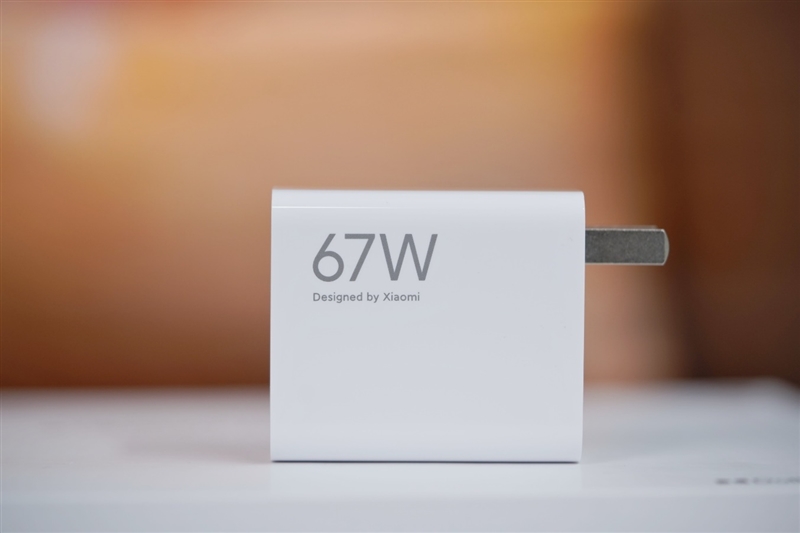User Experience
1) HyperOS 2.0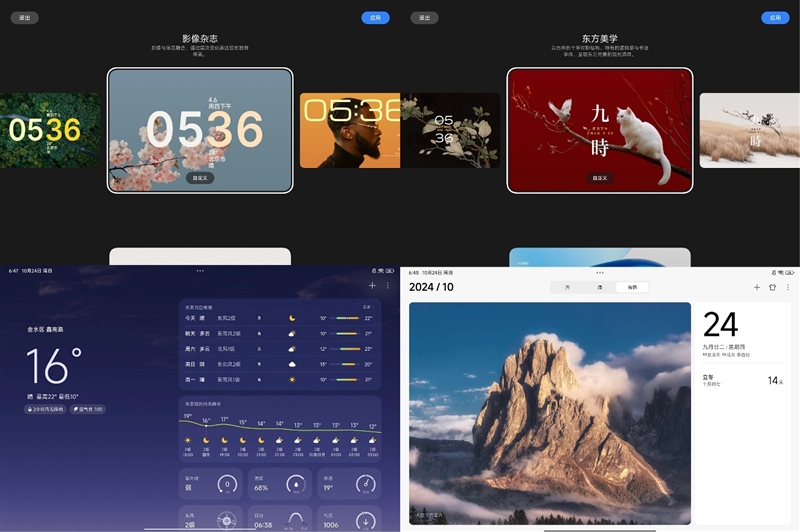
Upon booting up, the computer prompts that the system update is complete, with the version upgraded to Xiaomi HyperOS 2.0.3.0. This fully enhanced OS not only delivers a smoother experience but also introduces a new aesthetic design.
The updated OS features a lock screen with a traditional Chinese aesthetic, a redesigned weather app, a newly added desk calendar mode in the calendar app, and upgrades to many built-in apps. Each app is now customized for Pad use, avoiding the simple porting of mobile features.
Cross-device connectivity remains impressively seamless, allowing direct connection to a Xiaomi 14 Pro. This connection enables sending a photo from the phone to the Xiaomi Pad 7 Pro via Xiaomi Transfer without needing to pick up the phone at all.
2) Text and Office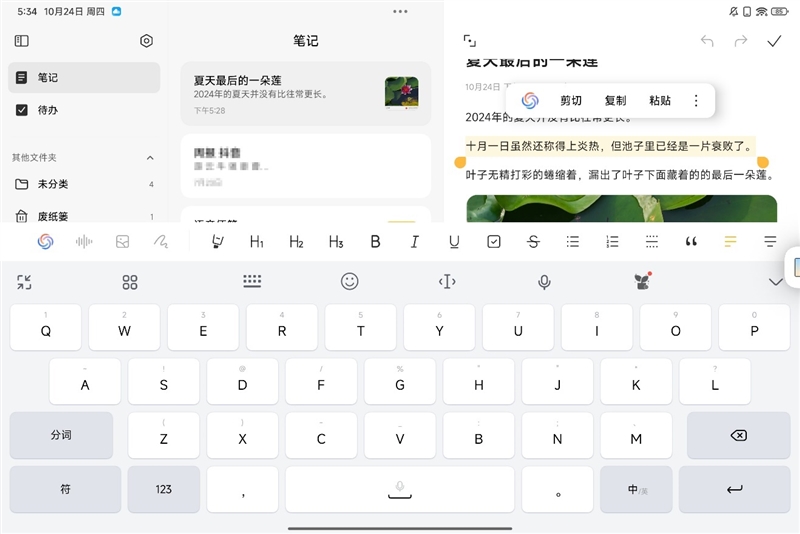
With a multi-tasking split screen, the Pad lets you open the photo album app to select pictures while simultaneously taking notes. You can easily adjust the split-screen ratio for either side as needed.
Want to post something directly to Moments? Just switch back to the phone and do it there. If any part of your writing needs improvement, simply select the text, tap the Xiaomi Surge AI icon, and let AI assist you.
Xiaomi HyperOS’s AI writing function offers four main tools: summary, error correction, expansion, and text polishing. The text polishing tool even has four preset language styles to suit various needs, including a “friendly” style for a more polished tone. Want an extended piece? Simply click expand and watch the AI produce a natural flow of text in seconds.
While writing, if something prompts a quick search, use the workbench mode on the Xiaomi Pad 7 Pro, which supports windowed applications like a PC. Without interrupting your work, open the browser to confirm details, as you would on a desktop.
Equipped with desktop-grade office software, the Xiaomi Pad 7 Pro provides the familiar WPS Office interface, nearly identical to the desktop version. With an external keyboard and mouse, using it feels just like working on a PC. The Pad also features desktop-level CAJViewer software for functions like layer stripping, line annotation, mark jumps, and online translation, making it especially useful for students and researchers.
The super document feature also extends from flagship phones to the Xiaomi Pad 7 Pro, supporting not only professional files from PC platforms but also files from the iWork suite on Mac.
3) Camera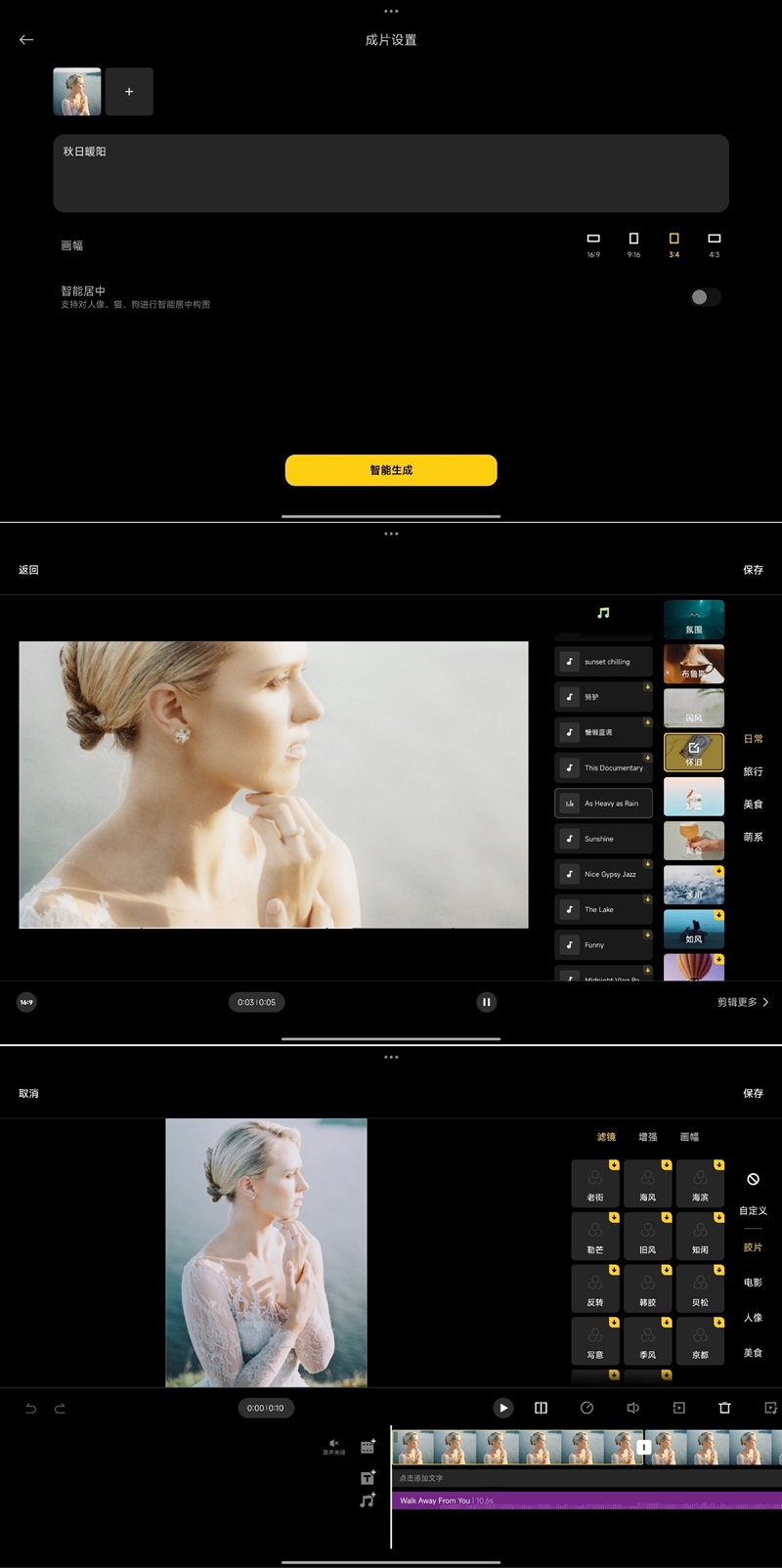
HyperOS 2.0’s album app has received an optimization. In addition to sections for people, albums, journeys, and time, a new creation section is available.
The smart film feature enables you to select 1-30 photos, add a brief description, and let AI automatically generate a short film with multiple styles and soundtracks to choose from. If you prefer a custom touch, click Edit More to add filters, text, and other advanced options.
Creating photo movies is also straightforward—select 3-30 photos, choose templates, modify the soundtrack, and arrange photos as desired for an upgraded slide-show effect. These versatile functions make it easy to use across different needs.
The AI-powered magic cutout feature can accurately detect and separate characters in photos, allowing quick background changes or easy insertions of other photos. OCR text recognition is also highly accurate, making extracted text instantly usable in apps like WPS with minimal proofreading.
4) Audio and Video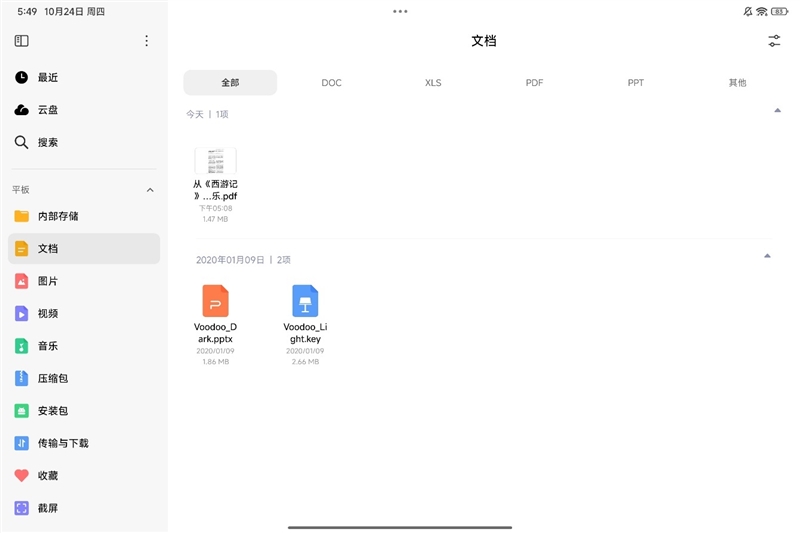
The Xiaomi Pad 7 Pro, certified by Dolby, supports Dolby Vision and Dolby Atmos, upgrading audio and video quality upon activation in video apps. With four flagship speakers and four-channel immersive surround sound, the device provides an unparalleled immersive experience for both audio and video.
Here’s a rewrite with active voice:
Performance Test
- AnTuTu
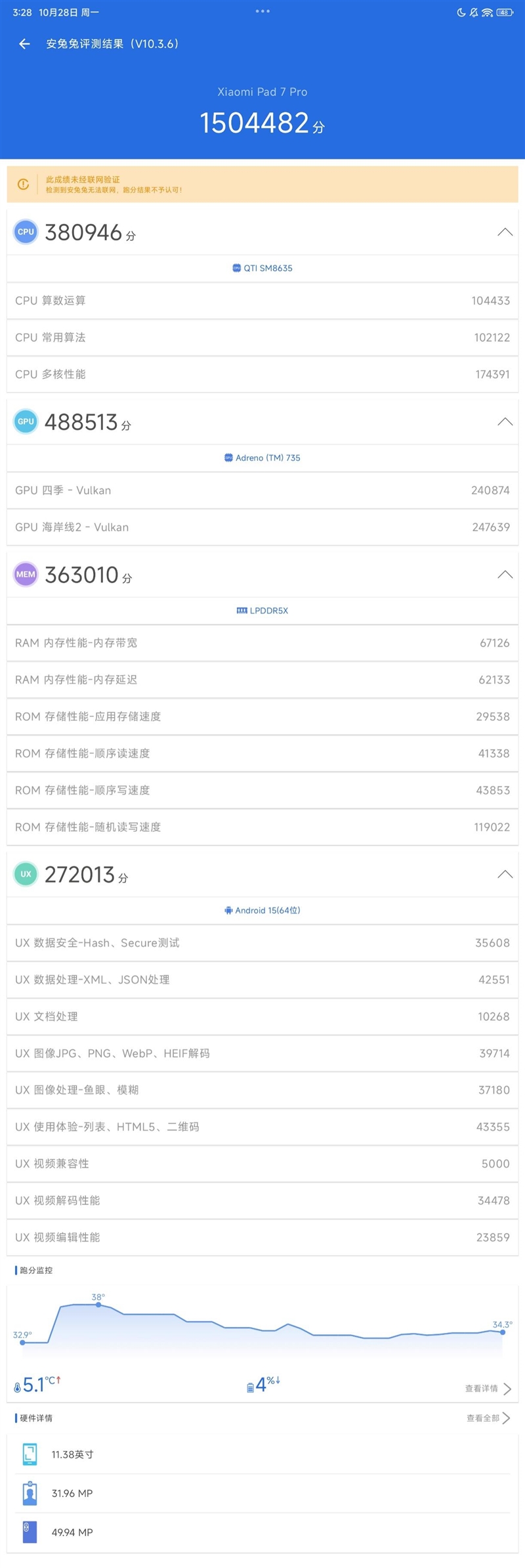
The AnTuTu score surpasses 1.5 million points, marking a 36% increase compared to the previous generation. The CPU performance significantly improves by about 52%.
- GeekBench 6
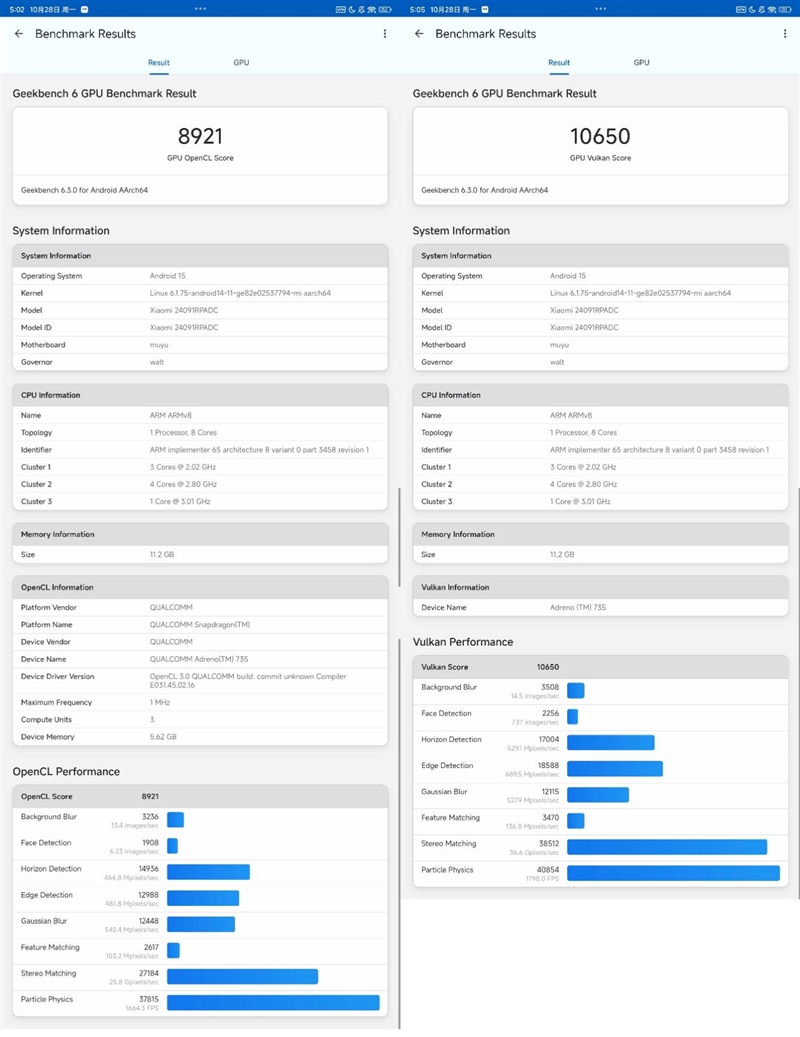
In the Geekbench 6 test, the CPU’s single-core performance score rises by about 45%, while the multi-core performance score increases by about 23%. The GPU OpenCL score reaches 8921, and the GPU Vulkan score hits 10650.
- AndroBench
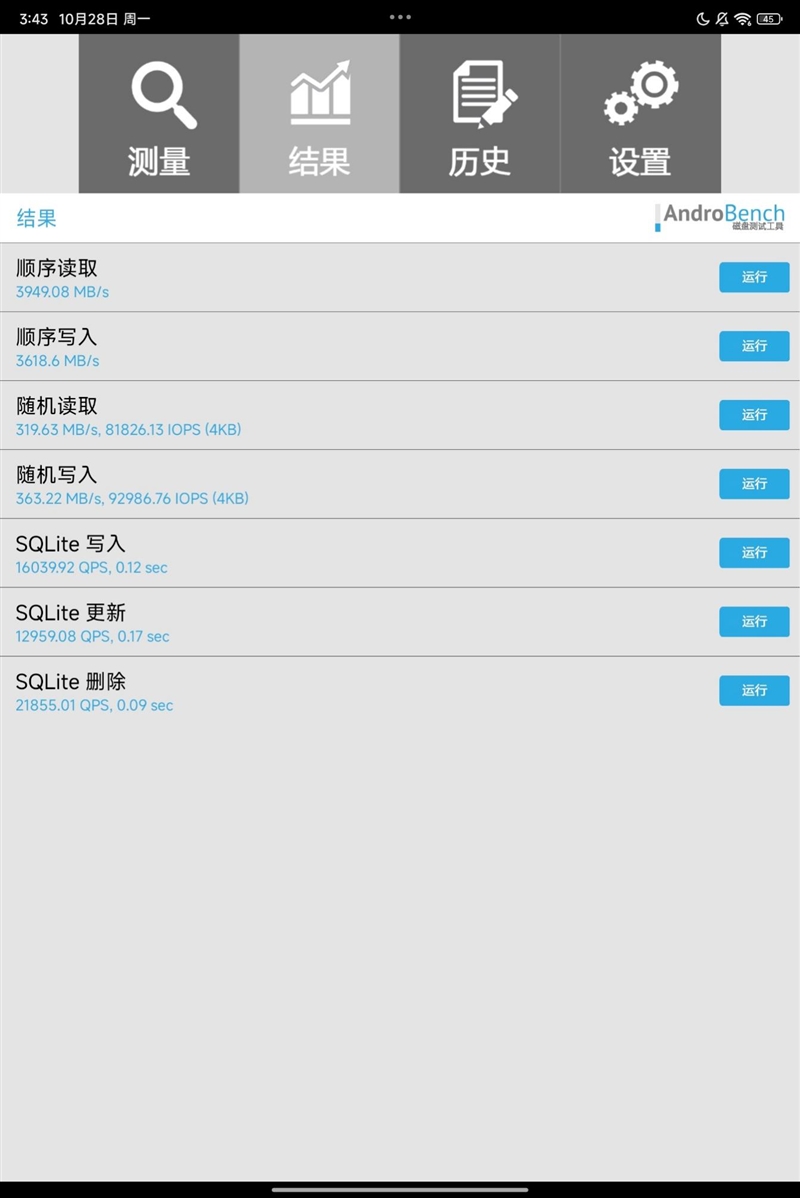
In the AndroBench test, the powerful UFS 4.0 performance enables the Xiaomi Pad 7 Pro to double its sequential read and write performance compared to the previous generation.
Game Test
We conducted a game test by running four high-load games: “Genshin Impact,” “Honor of Kings,” “Honkai Impact 3: Sky Railway,” and “Delta Operation.” We played all games at the highest frame rate and picture quality (with frame number priority), recording frame rate performance during gameplay.
- Genshin Impact
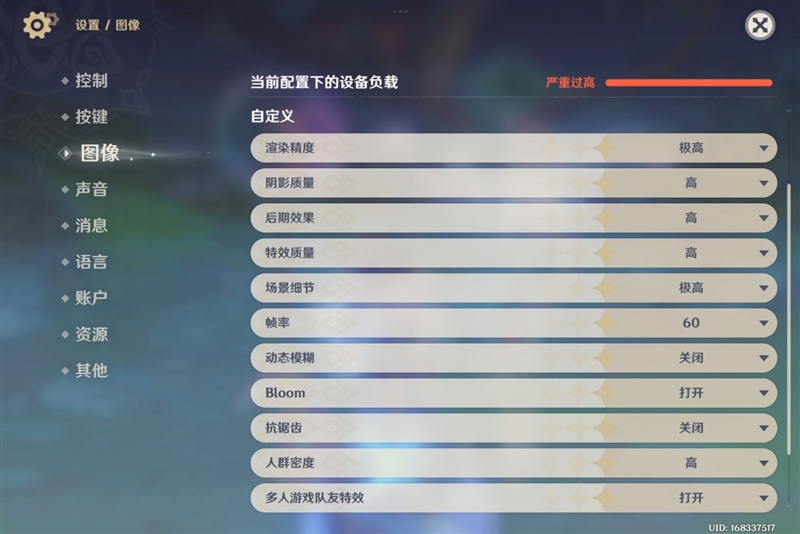
We began with the high-load mobile game “Genshin Impact,” set to 60 frames per second (FPS) at the highest picture quality. We performed a map test in Xumi City for 15 minutes and observed that the frame rate stabilized at 60 FPS for most of the session.
- Honor of Kings
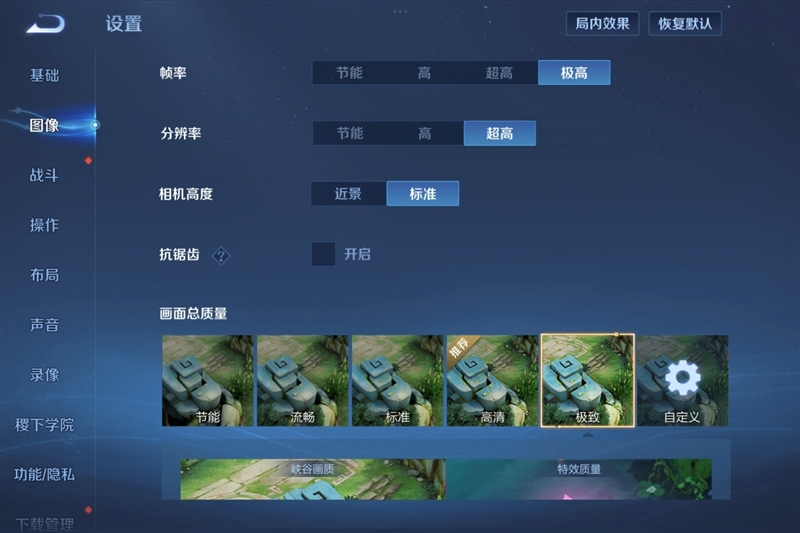
In “Honor of Kings,” we set the image quality to the extreme and played a 5V5 match. We found that the frame rate remained stable at 120 FPS throughout the entire game, showing minimal fluctuation.
- Honkai Impact 3: Sky Railway
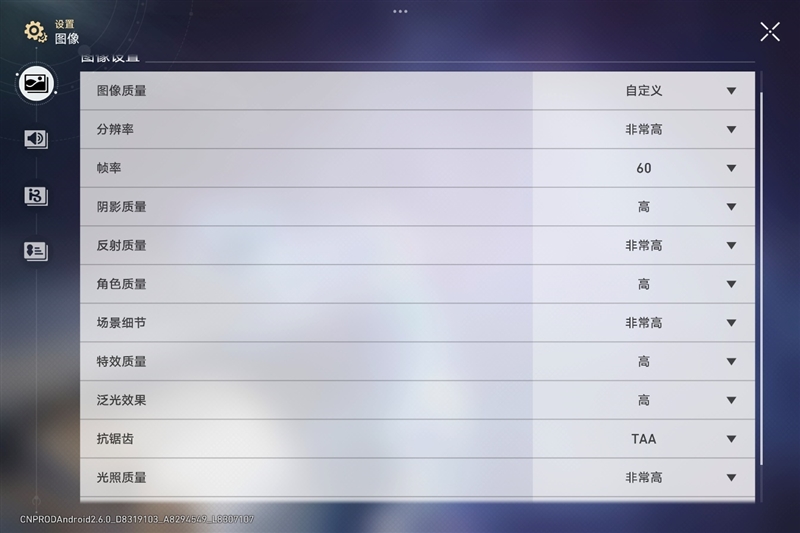
In “Honkai Impact 3,” we enabled the highest image quality and resolution while setting the frame rate to 60 FPS. During normal gameplay, we noticed that frame rate fluctuations occurred primarily during transitions between battle scenes, but it generally remained stable within the 58-60 FPS range.
- Delta Operation
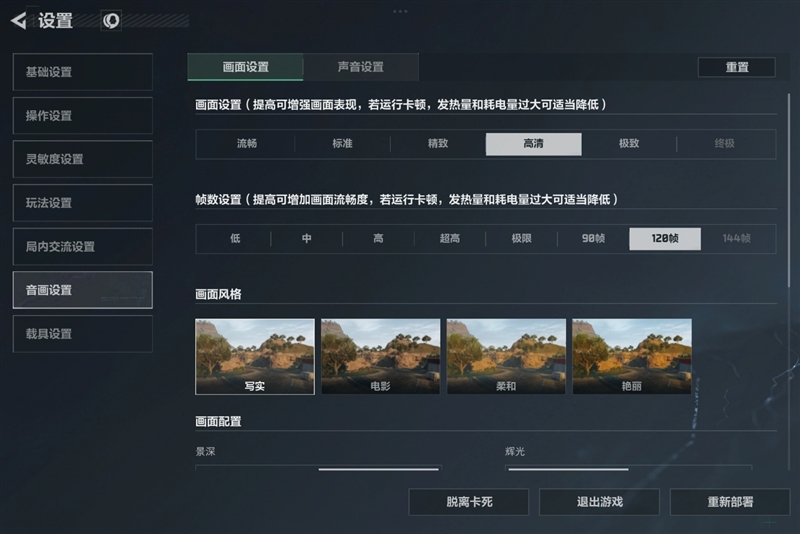
In “Delta Operation,” we could not enable extreme image quality and 120 frames simultaneously, so we selected HD image quality with 120 FPS. The frame rate initially exceeded 90 FPS, but as battles commenced and smoke bombs filled the screen, the frame rate fluctuated around 90 FPS. When waiting to respawn after dying, the frame rate dropped sharply to 30 FPS, likely due to the fixed frame rate in the respawn interface.
After completing all game tests, the Xiaomi Pad 7 Pro remained only slightly warm. The Pad’s large heat dissipation area, combined with its all-metal shell, contributed to excellent heat performance.
Battery Life Test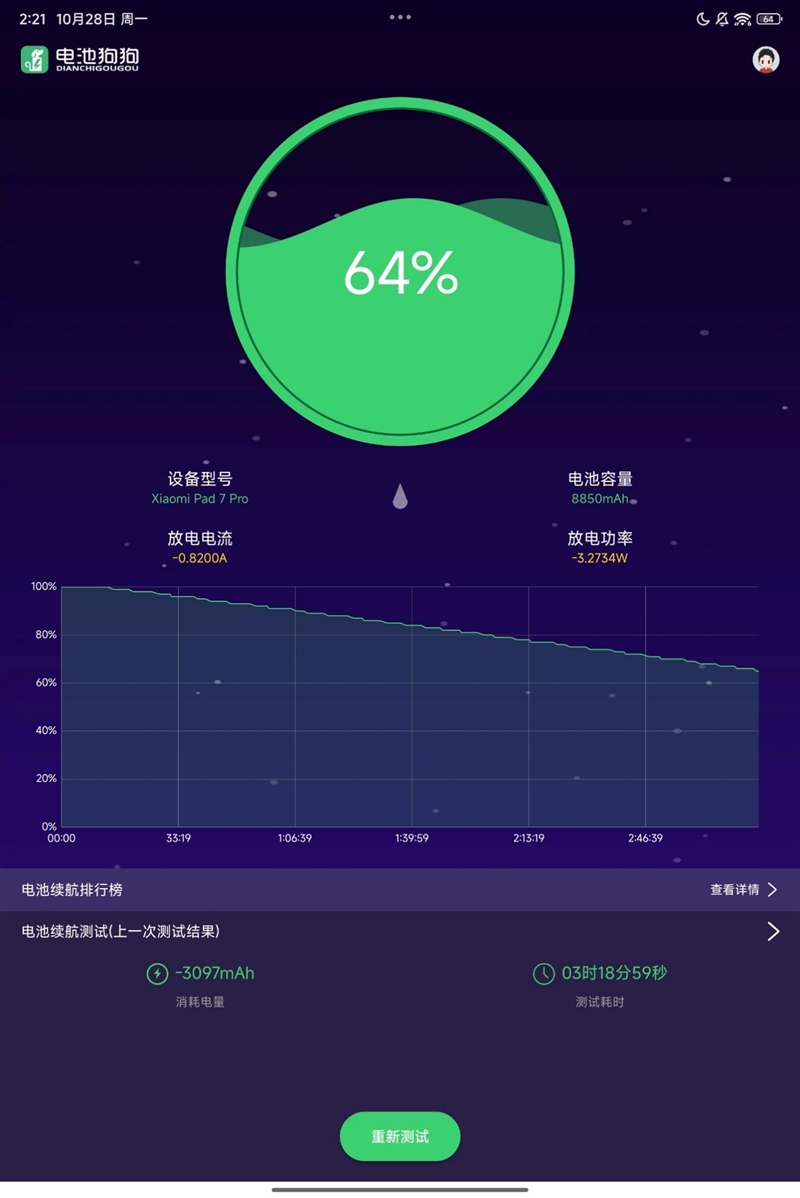
The Battery Dog software tests the device’s battery life by simulating high-intensity operations, such as 3D game video playback.
Starting with a full charge, the battery level dropped to 65% after running for 3 hours and 19 minutes. This indicates that the Xiaomi Pad 7 Pro can last for 9 hours and 29 minutes under high-intensity usage conditions.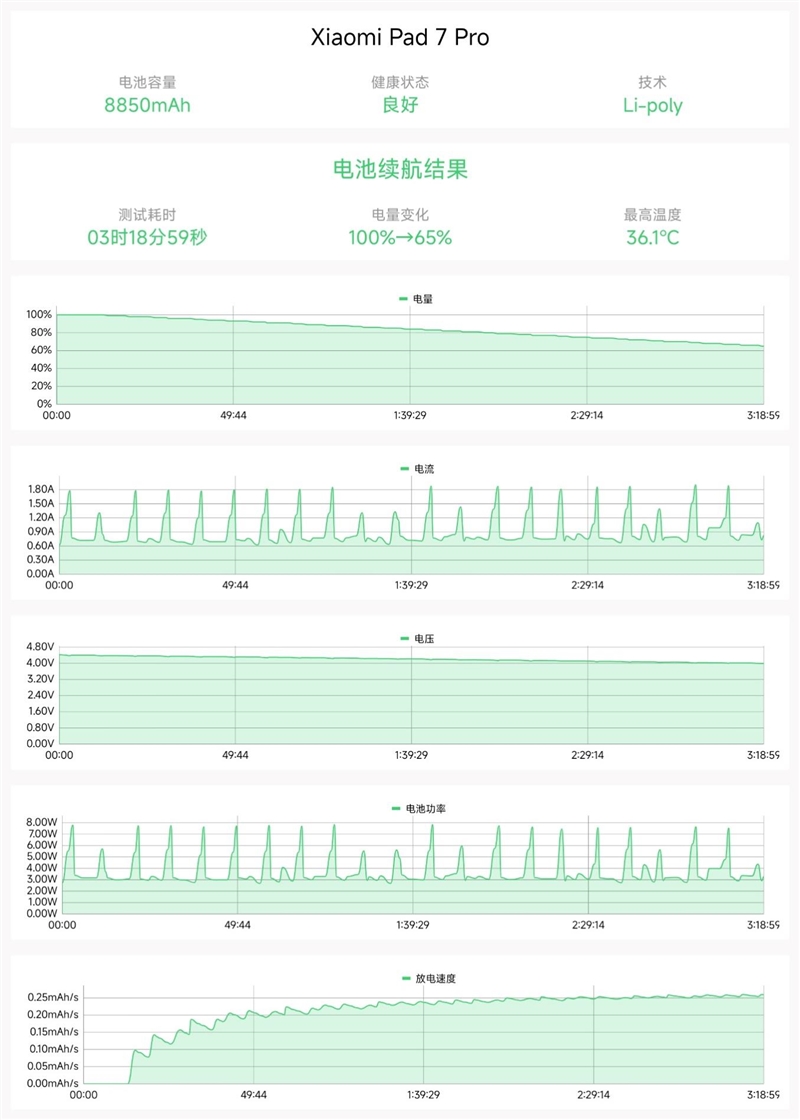
Next, I adjusted the brightness of the Xiaomi Pad 7 Pro to 70% and the volume to 40%. Then, I used the B station app to play a video continuously for two hours. During this time, the battery power decreased from 61% to 45%. Therefore, I estimate that it can play online videos continuously for more than 12 hours when fully charged.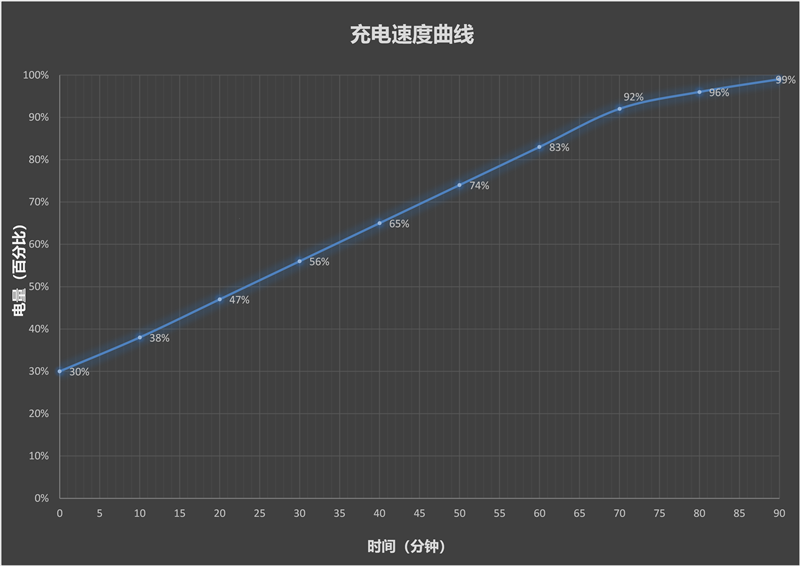
When the battery level of the Xiaomi Pad 7 Pro dropped to 30%, I plugged in the original 67W charger. Xiaomi opted not to implement very aggressive high-speed fast charging. The entire charging process remained smooth, and at the end, it engaged trickle protection, which helps control charging heat and extend battery life.
Verdict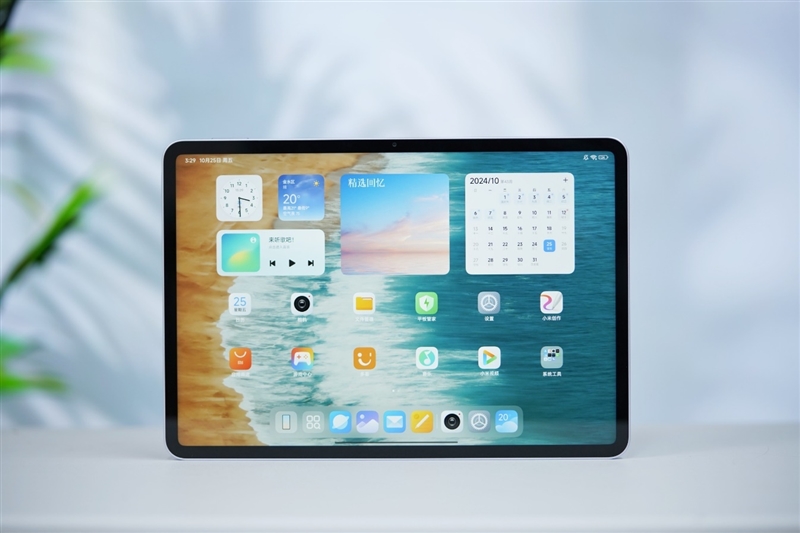
Supported by system-level AI, the Xiaomi Pad 7 Pro showcases the evolutionary direction of the new generation of Android tablets, making them easier to use than ever before.
First, regarding the system, HyperOS 2 introduces the self-developed Surge system kernel, HyperCore, which thoroughly reconstructs the software based on the unique operating habits of tablets. This reconstruction maximizes performance advantages, providing a smoother user experience with lower power consumption. HyperOS 2 specifically optimizes multi-tasking scenarios, improving fluency by 69%. Users can conveniently summon the AI assistant in any scenario without switching applications, ensuring a seamless workflow.
Xiaomi Pad 7 Pro and HyperOS 2.0 truly make AI tablets accessible to everyone, eliminating barriers to use. The integrated hardware and software design offers convenience and speed that even surpasses using a computer. The concept of “productivity” has never been clearer and more specific on a Pad.
Due to limited conditions, we could not test the simultaneous interpretation function in 29 languages in the “AI Conference Toolbox” that the Xiaomi Pad 7 Pro offers. However, even the basic AI large model text optimization and expansion function demonstrate its convenience, allowing users to optimize their posts on WeChat Moments effortlessly.
The soon-to-be-implemented “AI Magic Painting” function in the Xiaomi Creation APP, designed specifically for the stylus, provides a “picture-based picture” experience with a lower threshold of use than “text-based picture” creation. This function does not require users to repeatedly refine and adjust prompts, enabling even those without relevant experience to produce satisfactory AI paintings easily. Children can doodle and generate images with just one click.
When users pick up the Xiaomi Pad 7 Pro, they open the door to AI. Whether enhancing work efficiency, assisting in the creation, or serving as a high-end entertainment device, users can explore freely. AI is already in their hands, and how they use it depends entirely on their needs and imagination.
Since Apple released the iPad Pro series, tablets have seemed linked to productivity. Today, the phrase “productivity before buying, iQiyi after buying” feels more like a joke. However, this does not mean the Xiaomi Pad 7 Pro focuses solely on productivity; it maintains Xiaomi’s usual entertainment level as well.
With Dolby dual certification, its video and audio effects rival those of televisions, while four speakers support high volume mode. Its slim design delivers impressive sound effects, providing users with an immersive audio-visual experience. Meanwhile, the third-generation Snapdragon 8s processor offers powerful performance, smoothly handling mainstream games and multi-tasking operations, effectively eliminating lag.
As AI sweeps across industries, all products evolve toward AI. How should tablets adapt to this new era? The Xiaomi Pad 7 Pro sets a new benchmark for Android tablets in the AI age. Its introduction will undoubtedly propel tablets forward, bringing users more practical and smarter functions, and making AI a reality on tablets.
Read Also: Xiaomi 15 Pro Review: The Most Powerful Phone Ever Made?
